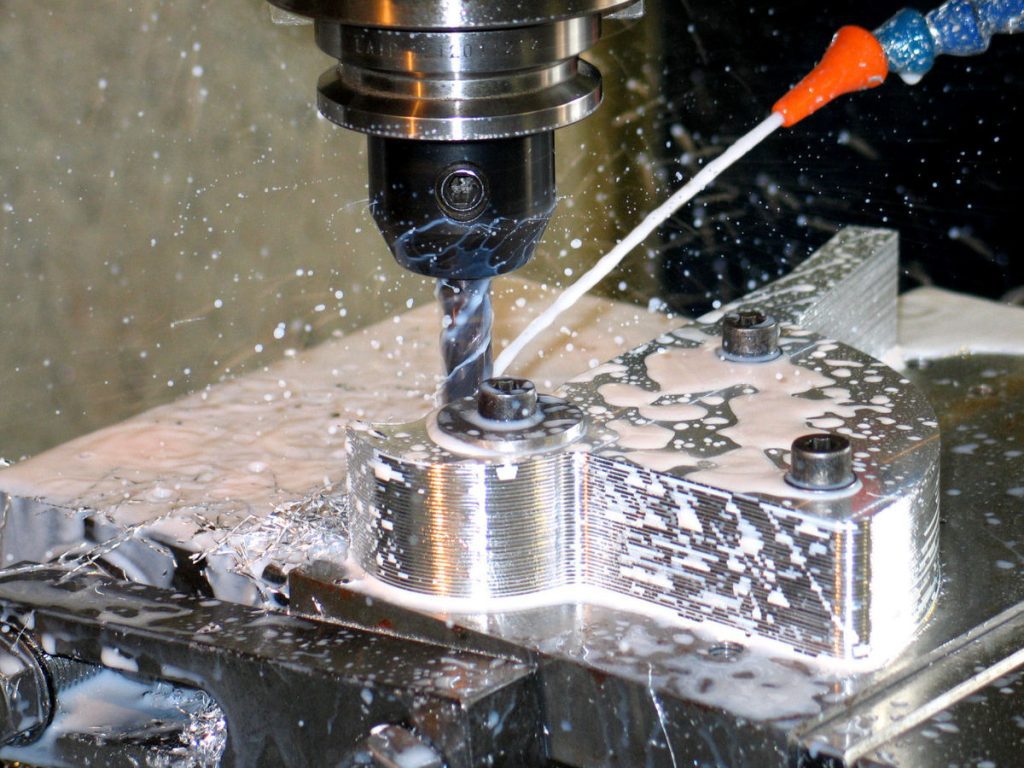Fasteners and Machining: Maximizing Style for Superior Manufacturing
Fasteners and Machining: Maximizing Style for Superior Manufacturing
Blog Article
Browsing the World of Fasteners and Machining: Methods for Accuracy and Speed
In the intricate realm of fasteners and machining, the pursuit for precision and speed is a perpetual challenge that requires meticulous interest to information and tactical preparation. From understanding the varied selection of fastener kinds to picking optimal products that can withstand extensive needs, each action in the process plays an essential role in achieving the preferred end result. Accuracy machining techniques additionally boost the complexity of this craft, needing a fragile equilibrium in between technical competence and innovative methods. As we look into the strategies that can enhance both speed and performance in this domain name, the interplay between top quality control measures and operational quality becomes a crucial centerpiece.
Understanding Bolt Types
When picking fasteners for a task, understanding the numerous types offered is essential for making certain optimal efficiency and reliability. Bolts are made use of with nuts to hold materials together, while screws are functional fasteners that can be utilized with or without a nut, depending on the application. Washing machines are important for dispersing the lots of the fastener and stopping damages to the material being secured.
Picking the Right Products
Understanding the value of selecting the best products is paramount in guaranteeing the optimum performance and dependability of the picked fastener types went over formerly. When it concerns fasteners and machining applications, the product selection plays a critical duty in determining the overall stamina, durability, corrosion resistance, and compatibility with the intended atmosphere. Different materials use differing residential properties that can significantly impact the performance of the fasteners.
Common materials used for fasteners include steel, stainless steel, brass, light weight aluminum, and titanium, each having its one-of-a-kind toughness and weak points. Steel is renowned for its high stamina and toughness, making it ideal for a variety of applications. Stainless-steel supplies superb rust resistance, suitable for atmospheres prone to moisture and chemicals. Aluminum is corrosion-resistant and light-weight, making it appropriate for applications where weight reduction is essential. Brass is frequently chosen for its visual allure and exceptional conductivity. Titanium is understood for its extraordinary strength-to-weight proportion, making it optimal for high-performance applications. Choosing the right product includes thinking about elements such as toughness demands, environmental problems, and spending plan restrictions to ensure the wanted efficiency and longevity of the bolts.
Accuracy Machining Techniques

In addition to CNC machining, various other accuracy methods like grinding, transforming, milling, and drilling play crucial roles in bolt manufacturing. Grinding assists attain fine surface area finishes and tight dimensional resistances, while turning is usually utilized to create round components with accurate sizes. Milling and boring procedures are essential for forming and creating openings in bolts, guaranteeing they satisfy specific specifications and function appropriately.
Enhancing Speed and Efficiency
To maximize fastener production procedures, it is vital to enhance procedures and execute effective approaches that complement precision machining methods. One key approach for enhancing speed and effectiveness is the application of lean production concepts. By minimizing waste and concentrating on continual renovation, lean methods help maximize and remove traffic jams operations. Additionally, purchasing automation technologies can substantially enhance manufacturing rate. Automated systems can take care of recurring jobs with accuracy and rate, enabling workers to concentrate on more complex and value-added activities. Taking On Just-In-Time (JIT) inventory management can also improve efficiency by ensuring that the right products are readily available at the appropriate time, minimizing excess supply and lowering preparations. Promoting a culture of collaboration and interaction among team participants can improve overall performance by advertising transparency, problem-solving, and innovation. By incorporating these strategies, producers can achieve an equilibrium between rate and precision, ultimately enhancing their competitive side in the fastener sector.
Quality Control Procedures
Executing strenuous quality assurance actions is essential in ensuring the dependability and consistency of fastener items in the manufacturing process. Quality assurance actions include various phases, starting from the choice of basic materials to the final examination of the completed bolts. One fundamental element of quality assurance is conducting detailed material examinations to verify compliance with specs. This entails analyzing factors such as product longevity, make-up, and strength to assure that the bolts satisfy sector criteria. In addition, checking the machining processes is necessary to promote dimensional precision my explanation and surface area finish quality. Utilizing advanced modern technology, such as computerized examination systems and accuracy measuring tools, can enhance the precision and performance of high quality control procedures.
Routine calibration of tools and machinery is important to keep consistency in manufacturing and ensure that fasteners fulfill the required resistances. Implementing stringent methods for identifying and attending to defects or non-conformities is essential in avoiding substandard items from getting in the market. By establishing a detailed quality control framework, makers can promote the credibility of their brand name and supply bolts that meet the greatest requirements of efficiency and durability.
Final Thought

In the elaborate realm of fasteners and machining, the mission for accuracy and rate is a continuous obstacle that requires thorough attention to information and critical preparation. When it comes click to read more to bolts and machining applications, the click for source product option plays an essential role in identifying the overall strength, resilience, rust resistance, and compatibility with the designated environment. Precision machining involves various innovative approaches that make certain the limited resistances and specifications needed for fasteners.In addition to CNC machining, various other accuracy techniques like grinding, transforming, milling, and exploration play crucial functions in fastener production.To maximize bolt production processes, it is essential to streamline procedures and carry out effective strategies that enhance accuracy machining methods.
Report this page